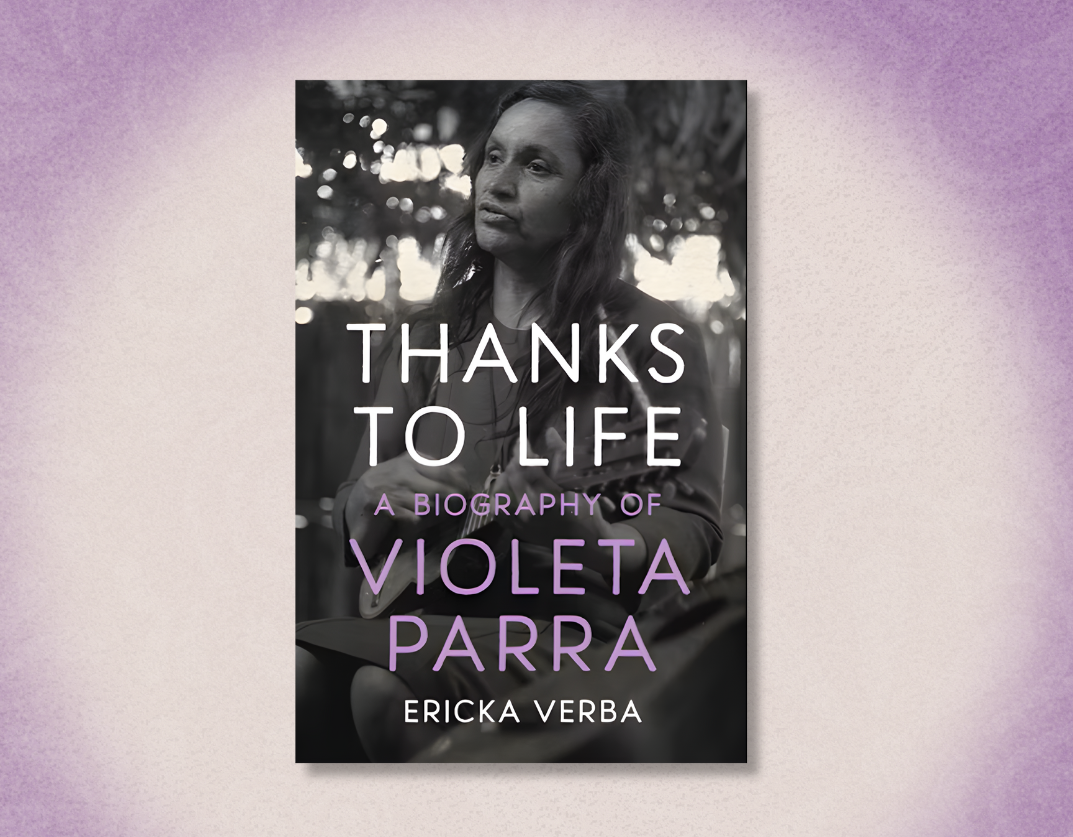Ericka Verba’s love for Chilean singer Violeta Parra began in high school in the 1970s when a Chilean family moved into her quiet hometown in Massachusetts.
“They were very exciting. They were artists and musicians,” the director and professor of Latin American Studies at California State University said with a smile.
Verba formed a close relationship with the artistic family, who had fled the brutal U.S-backed Augusto Pinochet dictatorship and went on to teach Verba some of her first Violeta Parra songs.
In “Thanks to Life: A Biography of Violeta Parra,” Verba chronicles the life of the Chilean singer who played an important role in La Nueva Canción. This left-wing protest music movement spread across Latin America in the 1960s.
The book also traces Parra’s artistic pursuits in Latin America and Europe, such as through her intricately woven arpilleras or tapestries.
Parra was born to a poor family in the small town of San Carlos in the southern province of Ñuble, Chile. Her father was a schoolteacher, and her mother was a seamstress.
Given their class status, Verba explained that Parra and her ten siblings often had to “make the party themselves” because they didn’t have access to record players or radios.
“So if you wanted to dance, guess who had to make the music?” Verba said. “And so the father played with his siblings, and they would dance, and the father sang, and they would learn the songs.”
Parra’s father died of tuberculosis in 1930, and this led the family to take a toll economically. Parra and her siblings went out into the streets to play music and ask people for food and money.
Parra and her older sister later formed a folk group known as Las Hermanas Parra.
From 1940 to 1953, the duo performed at various bars and released albums that could be played on vinyl records.
Parra eventually began to step into her authentic self more. She composed many pieces on the guitar as well as songs for ballet and for documentary soundtracks.
Her visual art also developed.
By 1964, Parra was the first Latin American artist to have a solo exhibition at the Louvre Palace’s Musée des Arts Décoratifs.
Her tapestries were often made up of burlap, wool, oils, and sometimes even mosaic materials like rice, lentils, and seeds.
Her artwork depicted an array of historical events, popular costumes, her political beliefs, and more.
“I make an effort to show in my artwork Chile’s songs, legends, people’s lives. The ideas I have seem to me indispensable to express,” Parra once said.
Moreover, though Parra was not a member of Chile’s Communist Party, she maintained ties with socialists and communists.
According to Oxford University Press, she traveled to Europe as a member of the Chilean delegation to the Soviet-sponsored World Festival of Youth and Students in 1955 (Warsaw) and 1962 (Helsinki).
Parra died by suicide in 1967 but her songs such as Gracias a La Vida remain a influential and a source of inspiration for artists around the world.
You can learn more about the biography here.
